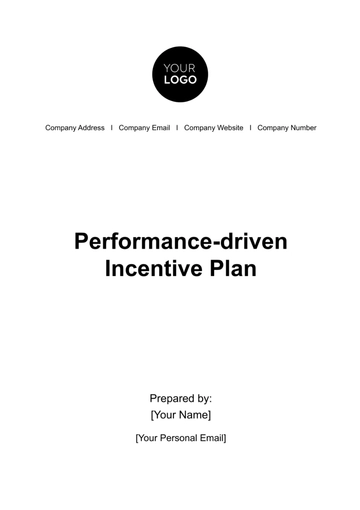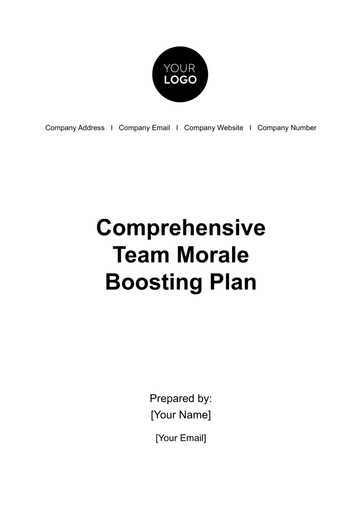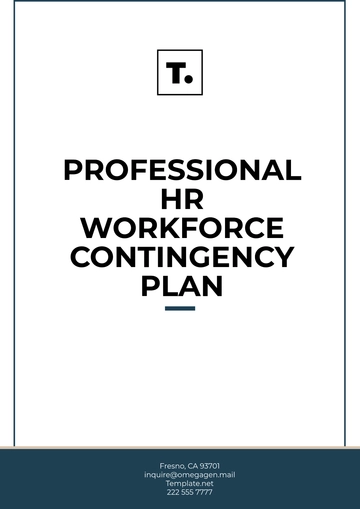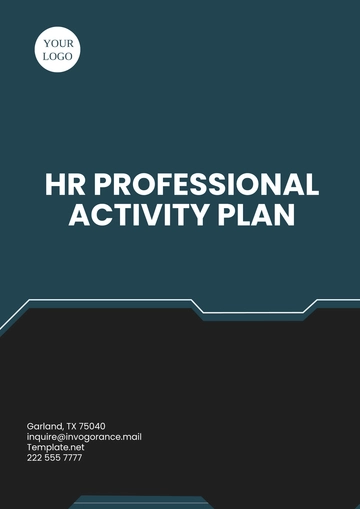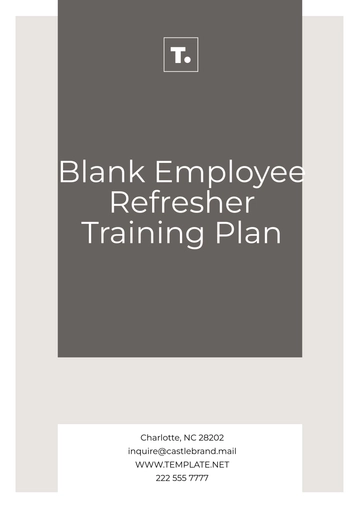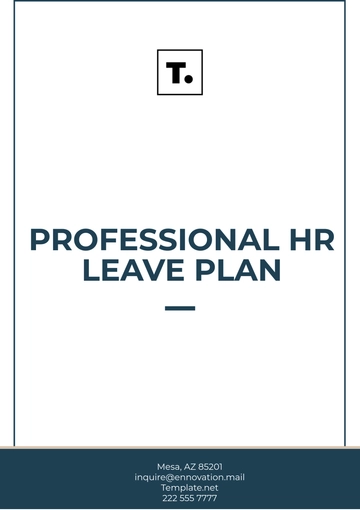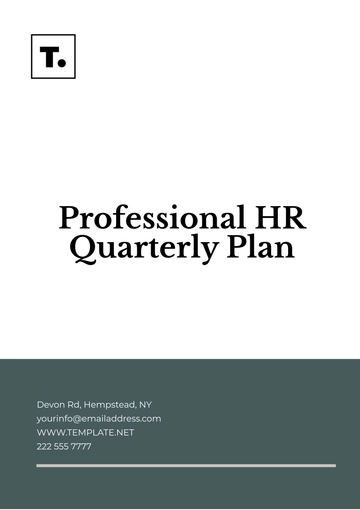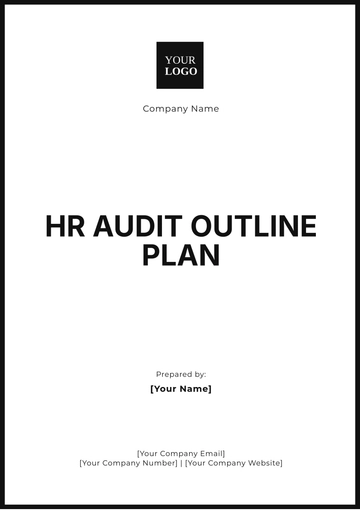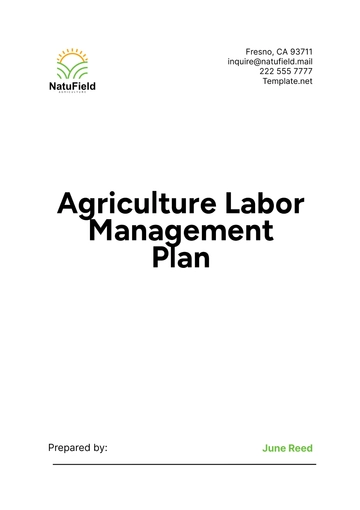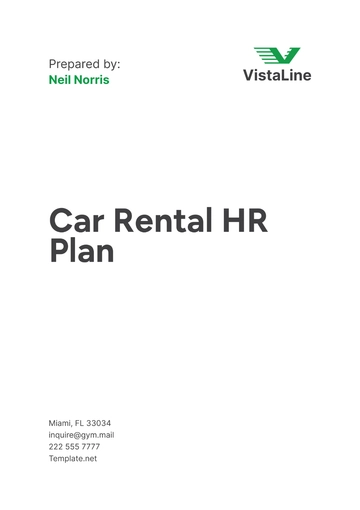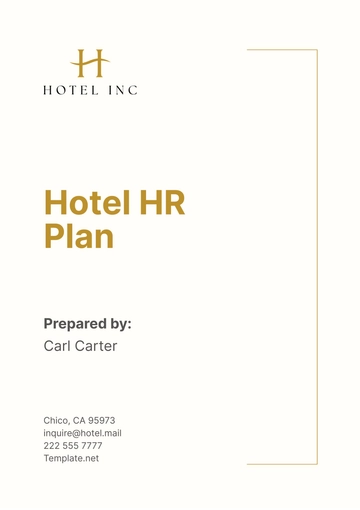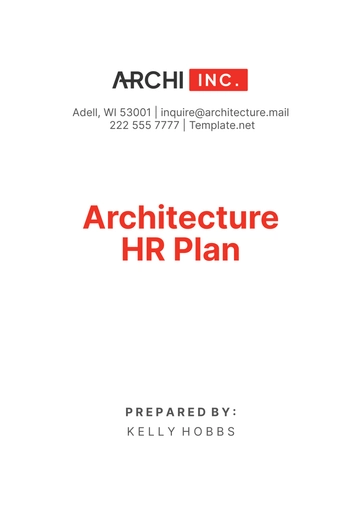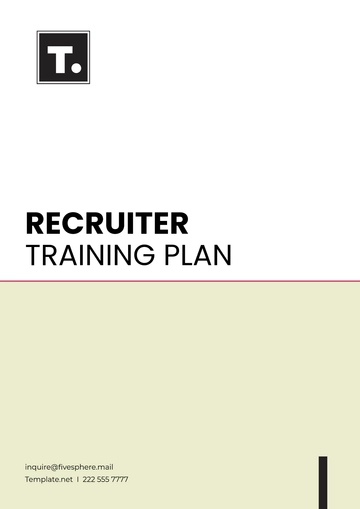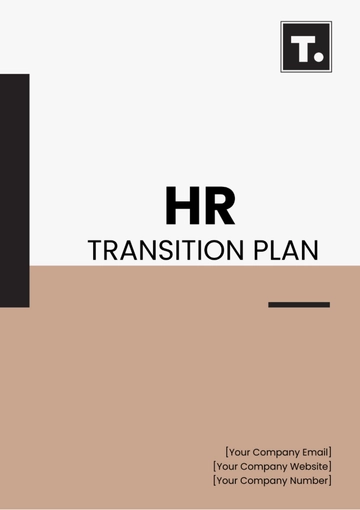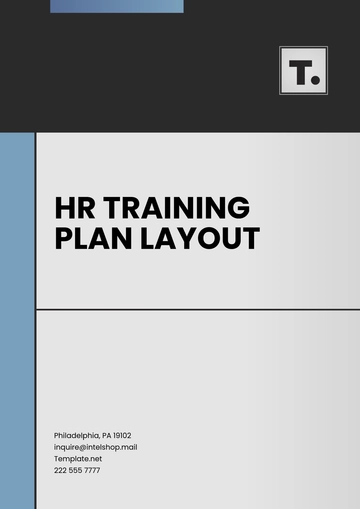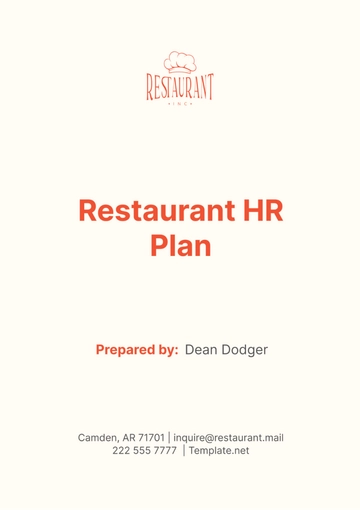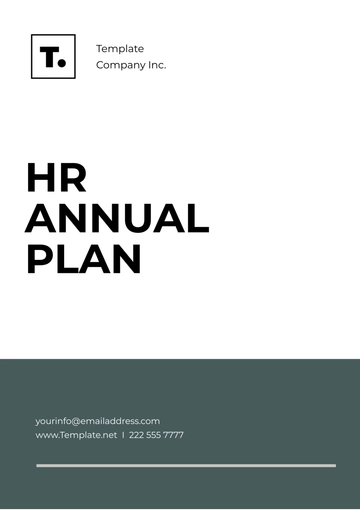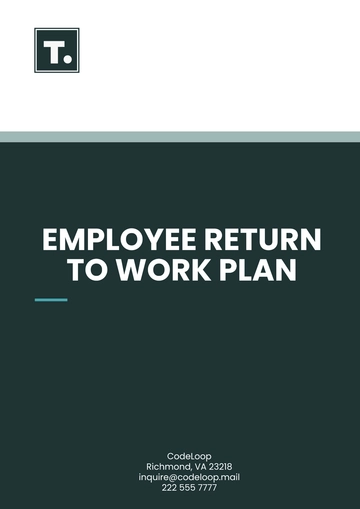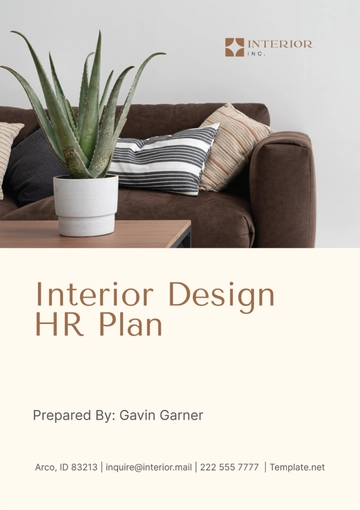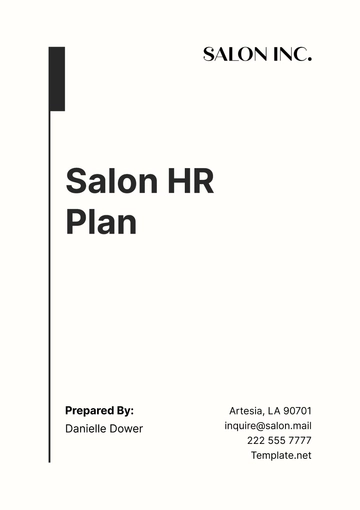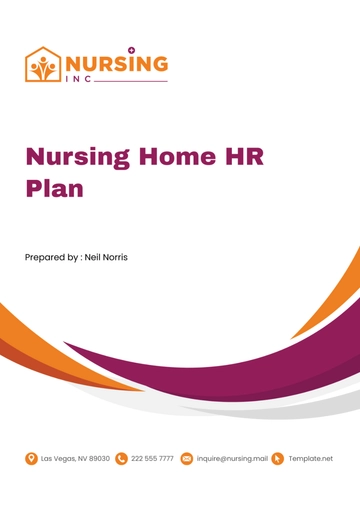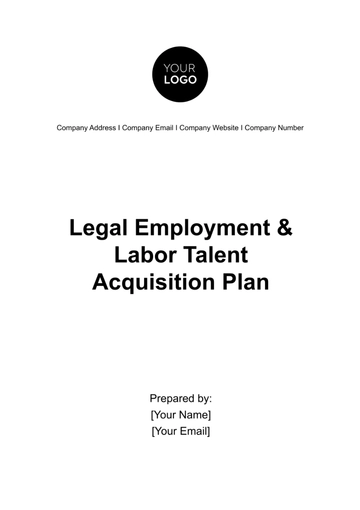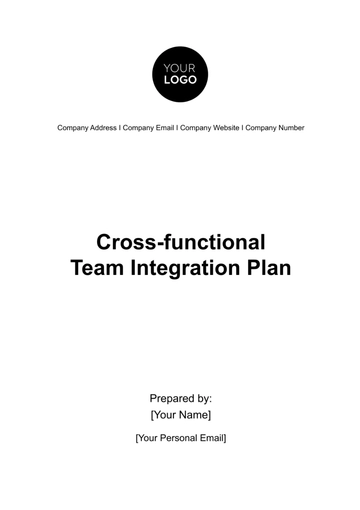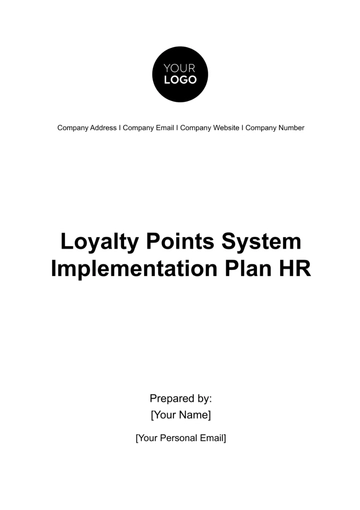Free Noise Pollution and Control Management Plan HR

1. Introduction
Welcome to the Noise Pollution and Control Management Plan HR for [Your Company Name]. This comprehensive plan outlines our commitment to ensuring a safe and healthy work environment for all employees while addressing noise-related concerns.
Purpose of the Plan
The purpose of this plan is to establish a framework for identifying, assessing, and mitigating noise pollution within our organization. It aims to safeguard the well-being of our employees, enhance productivity, and ensure compliance with applicable legal and regulatory requirements.
Scope
This plan applies to all [Your Company Name] employees and operations, encompassing all facilities and departments where noise exposure is a concern. It covers various job roles, from office settings to manufacturing environments, ensuring that noise-related hazards are adequately addressed across the organization.
Compliance with Legal and Regulatory Requirements
[Your Company Name] is committed to complying with all relevant federal, state, and local regulations regarding noise pollution. This plan aligns with guidelines set forth by agencies such as the Occupational Safety and Health Administration (OSHA). We are dedicated to upholding the highest standards of safety and health in the workplace.
2. Responsibilities
At [Your Company Name], the effective management of noise pollution is a shared commitment that involves every level of our organization.
HR Department Responsibilities | Employee Responsibilities | Management Responsibilities |
|
|
|
3. Identification of Noise Sources
Noise pollution management begins with a comprehensive understanding of the sources and levels of noise within the workplace. This section outlines how [Your Company Name] identifies, assesses, and documents noise sources.
Workplace Noise Assessment
A periodic workplace noise assessment is conducted at [Your Company Name]. This assessment involves measuring noise levels at various locations and job sites using calibrated sound level meters.
There are various types of Workplace Noise Assessments, each serving specific purposes. Here are five common types of Workplace Noise Assessments:
Baseline Noise Assessment
Task-Based Noise Assessment
Area Noise Assessment
Compliance Noise Assessment
Noise Source Inventory
We maintain a detailed inventory of noise sources within our organization. This inventory includes equipment, processes, and areas with elevated noise levels. This proactive approach allows us to identify potential sources of noise pollution and prioritize control measures.
Documentation of Noise Levels
Accurate documentation of noise levels is crucial for compliance and control. [Your Company Name] maintains records of noise measurements, including location, date, and time of assessment.
Location/ Area | Date of Assessment | Noise Level (dBA) | Measurement Method | Compliance (Yes/No) |
Manufacturing Floor 1 | 01/15/2051 | 85 | Sound Level Meter | No |
4. Health and Safety Measures
In our commitment to safeguarding the well-being of our employees, [Your Company Name] has implemented a robust set of health and safety measures to mitigate the risks associated with noise exposure.
Employee Training
We provide a range of training programs to enhance their understanding of noise pollution and safety measures:
Noise Awareness Training
Personal Protective Equipment (PPE) Training
Safe Work Practices
Hearing Conservation Training
Compliance Training
Personal Protective Equipment (PPE)
[Your Company Name] provides appropriate PPE, such as earplugs or earmuffs, to employees exposed to noise levels exceeding permissible limits. Employees are trained in the correct selection, fitting, and maintenance of PPE.
Noise Exposure Limits
Noise levels in the workplace are continuously monitored to ensure compliance, and corrective actions are taken promptly if limits are exceeded.
OSHA Noise Exposure Limits (in dB)
5. Noise Control
To effectively manage and mitigate noise pollution, we employ a comprehensive approach that encompasses various strategies and measures.
Engineering Controls
Engineering controls are fundamental to our noise control efforts. These measures involve modifying or redesigning processes, equipment, or workspaces to reduce noise at the source. Our approach includes:
Noise Source Identification
Sound Engineering Practices
Quiet Machinery Selection
Administrative Controls
Administrative controls focus on work practices and policies that limit noise exposure. We adopt the following administrative strategies:
Planning and scheduling noisy tasks during periods of lower occupancy or during designated time slots.
Implementing job rotation policies to minimize prolonged exposure to high-noise tasks.
Establishing designated quiet areas within the workplace to provide relief from noise-intensive workspaces.
Use of Hearing Protection
When engineering and administrative controls alone cannot achieve noise exposure limits, we provide appropriate hearing protection devices. Our hearing protection program includes:
Offering employees a range of hearing protection options, including earplugs and earmuffs.
Ensuring that employees are well-trained in the correct usage, fitting, and maintenance of hearing protection devices.
Noise Reduction Technologies
We constantly explore and implement advanced noise reduction technologies to further diminish noise levels. Our efforts include:
Sound-Absorbing Materials
Vibration Isolation
Noise-Canceling Technologies
Maintenance and Calibration of Noise Control Measures
Regular maintenance and calibration of noise control measures are crucial to their continued effectiveness. We have established comprehensive procedures, including:
Scheduled Maintenance: Adhering to regular maintenance schedules to ensure optimal performance of noise control equipment.
Quality Checks: Conducting frequent quality checks and audits to verify the functionality of noise reduction systems.
6. Communication and Employee Engagement
At [Your Company Name], fostering effective communication and engaging employees in our noise control efforts are essential components of our commitment to workplace safety and well-being. We recognize that open and transparent communication is vital in addressing noise-related concerns and ensuring a harmonious work environment.
Noise Awareness Programs
Our Noise Awareness Programs are designed to educate employees about the impact of noise on their health and safety. These programs include:
Conducting workshops and training sessions to raise awareness of noise-related risks and preventive measures.
Providing informative materials and resources that explain the importance of noise control and hearing protection.
Reporting of Noise Concerns
We encourage employees to actively participate in our noise control initiatives by reporting any noise-related concerns promptly. Our reporting mechanisms include:
Anonymous Reporting: Offering a confidential platform for employees to report noise-related issues without fear of retaliation.
Designated Contacts: Appointing designated personnel who are trained to address noise concerns and take necessary actions.
Employee Feedback Mechanisms
To engage employees in our noise control efforts, we value their feedback and input. Our feedback mechanisms include:
Regular Surveys
Noise Committees
Regular Communication Updates
Maintaining open channels of communication is integral to our approach. We provide:
Regular Updates
Transparency
7. Compliance with Regulations
Ensuring compliance with noise-related regulations and ordinances is a cornerstone of our commitment to providing a safe and legally compliant work environment at [Your Company Name]. We proactively monitor and adhere to the following regulatory requirements:
OSHA Regulations (if applicable): We diligently follow noise exposure limits and guidelines set by the Occupational Safety and Health Administration (OSHA) in the United States, if applicable to our operations. This includes maintaining records of noise exposure assessments, employee training, and the implementation of engineering and administrative noise control measures.
Local Noise Ordinances: We comply with any local noise ordinances and regulations that may apply to our facilities. This includes adhering to noise limits set by municipal authorities to minimize the impact of our operations on the local community.
Recordkeeping and Documentation
We maintain comprehensive records and documentation related to noise control and compliance efforts. This includes:
Records of noise exposure assessments conducted regularly.
Employee training records, including participation and completion documentation.
Maintenance and calibration records of noise control measures and equipment.
Documentation of any noise-related incidents, concerns, or complaints and actions taken to address them.
8. Emergency Response and Evacuation
We have established comprehensive emergency response and evacuation procedures to ensure that employees are prepared for unforeseen situations, including those involving high-noise areas.
Procedures for Emergency Situations
We have developed clear and detailed emergency response procedures that cover a wide range of potential scenarios, including fires, chemical spills, natural disasters, and medical emergencies. Employees are regularly trained on these procedures, and emergency response drills are conducted to ensure that everyone knows how to react swiftly and effectively in case of an emergency.
Evacuation Plans for High-Noise Areas
For areas of our facility that are classified as high-noise areas, we have specific evacuation plans in place.
Employees working in high-noise areas are provided with specialized hearing protection and communication devices that enable them to receive emergency instructions and communicate effectively during evacuations.
Evacuation routes and assembly points are clearly marked, and employees are familiarized with these routes through regular training and drills.
Our emergency response teams are trained to prioritize the safety of employees in high-noise areas and to coordinate evacuations effectively, taking into consideration the unique challenges posed by noise.
9. Monitoring and Auditing
It is our commitment to ensuring the ongoing safety and well-being of our employees. Regular noise level monitoring, combined with internal audits, empowers us to identify potential hazards, assess compliance with established noise control measures, and take corrective actions swiftly.
10. Documentation and Recordkeeping
In this section, we emphasize the vital role of documentation and recordkeeping in maintaining safety and compliance. Explore our visual guide for a simplified overview of this crucial process.
11. Review and Continuous Improvement
Regular reviews of the plan ensure its relevance in an ever-evolving workplace. Employee feedback, our most valuable resource, serves as the compass guiding us towards enhancement. By fostering a culture of continuous improvement, we remain proactive, adaptive, and unwavering in our pursuit of a safer and more harmonious work environment. This section embodies our dedication to progress and underscores the bedrock principles upon which our noise control measures are built.
- 100% Customizable, free editor
- Access 1 Million+ Templates, photo’s & graphics
- Download or share as a template
- Click and replace photos, graphics, text, backgrounds
- Resize, crop, AI write & more
- Access advanced editor
Address noise pollution effectively with the Noise Pollution and Control Management Plan HR Template, an invaluable asset found exclusively on Template.net! This plan is your editable and customizable ally for implementing precise noise control measures. Employ the intuitive AI Editor Tool to refine this plan, ensuring a customized approach immediately!
You may also like
- Finance Plan
- Construction Plan
- Sales Plan
- Development Plan
- Career Plan
- Budget Plan
- HR Plan
- Education Plan
- Transition Plan
- Work Plan
- Training Plan
- Communication Plan
- Operation Plan
- Health And Safety Plan
- Strategy Plan
- Professional Development Plan
- Advertising Plan
- Risk Management Plan
- Restaurant Plan
- School Plan
- Nursing Home Patient Care Plan
- Nursing Care Plan
- Plan Event
- Startup Plan
- Social Media Plan
- Staffing Plan
- Annual Plan
- Content Plan
- Payment Plan
- Implementation Plan
- Hotel Plan
- Workout Plan
- Accounting Plan
- Campaign Plan
- Essay Plan
- 30 60 90 Day Plan
- Research Plan
- Recruitment Plan
- 90 Day Plan
- Quarterly Plan
- Emergency Plan
- 5 Year Plan
- Gym Plan
- Personal Plan
- IT and Software Plan
- Treatment Plan
- Real Estate Plan
- Law Firm Plan
- Healthcare Plan
- Improvement Plan
- Media Plan
- 5 Year Business Plan
- Learning Plan
- Marketing Campaign Plan
- Travel Agency Plan
- Cleaning Services Plan
- Interior Design Plan
- Performance Plan
- PR Plan
- Birth Plan
- Life Plan
- SEO Plan
- Disaster Recovery Plan
- Continuity Plan
- Launch Plan
- Legal Plan
- Behavior Plan
- Performance Improvement Plan
- Salon Plan
- Security Plan
- Security Management Plan
- Employee Development Plan
- Quality Plan
- Service Improvement Plan
- Growth Plan
- Incident Response Plan
- Basketball Plan
- Emergency Action Plan
- Product Launch Plan
- Spa Plan
- Employee Training Plan
- Data Analysis Plan
- Employee Action Plan
- Territory Plan
- Audit Plan
- Classroom Plan
- Activity Plan
- Parenting Plan
- Care Plan
- Project Execution Plan
- Exercise Plan
- Internship Plan
- Software Development Plan
- Continuous Improvement Plan
- Leave Plan
- 90 Day Sales Plan
- Advertising Agency Plan
- Employee Transition Plan
- Smart Action Plan
- Workplace Safety Plan
- Behavior Change Plan
- Contingency Plan
- Continuity of Operations Plan
- Health Plan
- Quality Control Plan
- Self Plan
- Sports Development Plan
- Change Management Plan
- Ecommerce Plan
- Personal Financial Plan
- Process Improvement Plan
- 30-60-90 Day Sales Plan
- Crisis Management Plan
- Engagement Plan
- Execution Plan
- Pandemic Plan
- Quality Assurance Plan
- Service Continuity Plan
- Agile Project Plan
- Fundraising Plan
- Job Transition Plan
- Asset Maintenance Plan
- Maintenance Plan
- Software Test Plan
- Staff Training and Development Plan
- 3 Year Plan
- Brand Activation Plan
- Release Plan
- Resource Plan
- Risk Mitigation Plan
- Teacher Plan
- 30 60 90 Day Plan for New Manager
- Food Safety Plan
- Food Truck Plan
- Hiring Plan
- Quality Management Plan
- Wellness Plan
- Behavior Intervention Plan
- Bonus Plan
- Investment Plan
- Maternity Leave Plan
- Pandemic Response Plan
- Succession Planning
- Coaching Plan
- Configuration Management Plan
- Remote Work Plan
- Self Care Plan
- Teaching Plan
- 100-Day Plan
- HACCP Plan
- Student Plan
- Sustainability Plan
- 30 60 90 Day Plan for Interview
- Access Plan
- Site Specific Safety Plan
